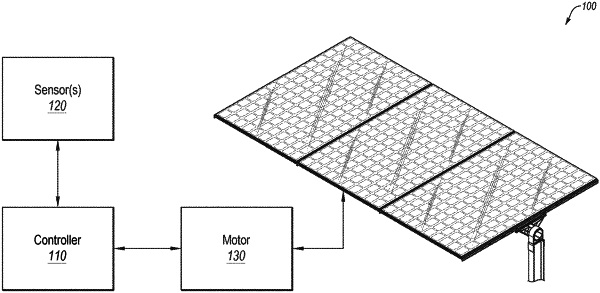| CPC G05D 3/105 (2013.01) [G01S 3/7861 (2013.01); H02S 20/32 (2014.12)] | 20 Claims |

|
10. A system, comprising:
one or more solar power units, the solar power units including a first row of solar power units and a second row of solar power units adjacent to and generally parallel with the first row of solar power units;
a motor configured to change orientation of at least one row of the solar power units;
a sensor configured to monitor an amount of energy generated by the solar power units; and
a controller in communication with the motor and the sensor, the controller configured to perform operations, comprising:
orienting at least the first row of the solar power units in a first position in which the first row of solar power units is at least partially shaded by the second row of solar power units;
monitoring data from the sensor regarding energy generated by at least one of the solar power units over a first window of time, the first window of time including from when the first row of the solar power units is oriented in the first position until a sun angle corresponds to when the first row of the solar power units is out of shade cast by the second row of the solar power units;
identifying a knee in energy generation during the first window of time, the knee indicating a second transition from a higher rate of change of energy generation to a lower rate of change of energy generation at a given solar angle; and
plotting a trajectory of future orientation positions over time of the solar power units that include an orientation and time corresponding to the given solar angle.
|